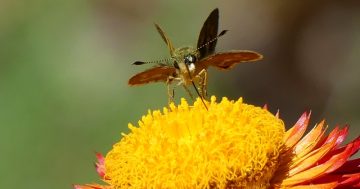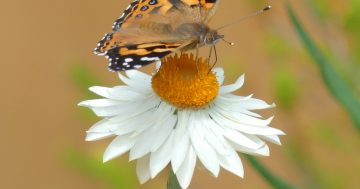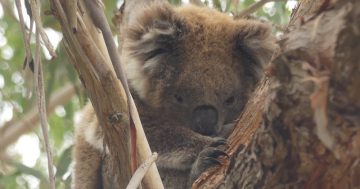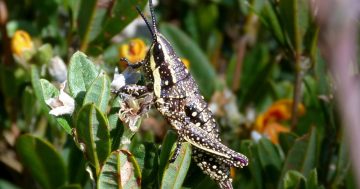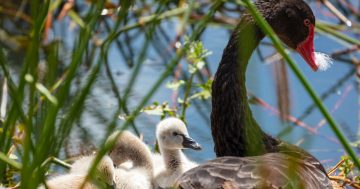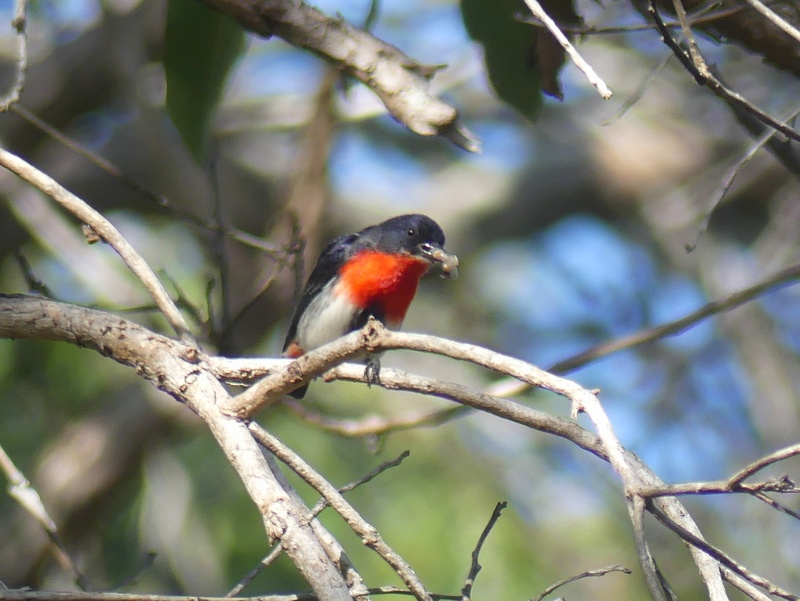
A male Mistletoebird with mistletoe berries. Photo: Ian Fraser.
There are few plants so misunderstood as the wonderful mistletoes, which we know best as those great bunches of yellowish leaves growing among the foliage of eucalypts – although there are many kinds.
They live by tapping into the sap system of their host and taking a modest amount of water and dissolved minerals for their own use.
The first and greatest misconception is that as parasites they must be ‘bad’ and should be eliminated.
I have even known of park care groups in Canberra (in the past, fortunately) who carefully cut vast amounts of mistletoe from the local reserve in the misguided belief that they were ‘helping’. In a moment I will explain just why this was so wrong.
An associated piece of mistletoe fake news is that they are not even Australian, so their removal is even more justified.
This is perhaps partly associated with tales of northern mistletoes – related to Australian ones, though not closely – which have strong folklore associations in many cultures, including Christmas connections in recent times.
However the mistruth has also been spread by people (including in the Canberra area) who sought to make money by persuading landowners that they needed to get rid of their mistletoes, ‘and we’re here to help!’.
Enough of the myths; how about some truths about mistletoes, which are far more interesting?
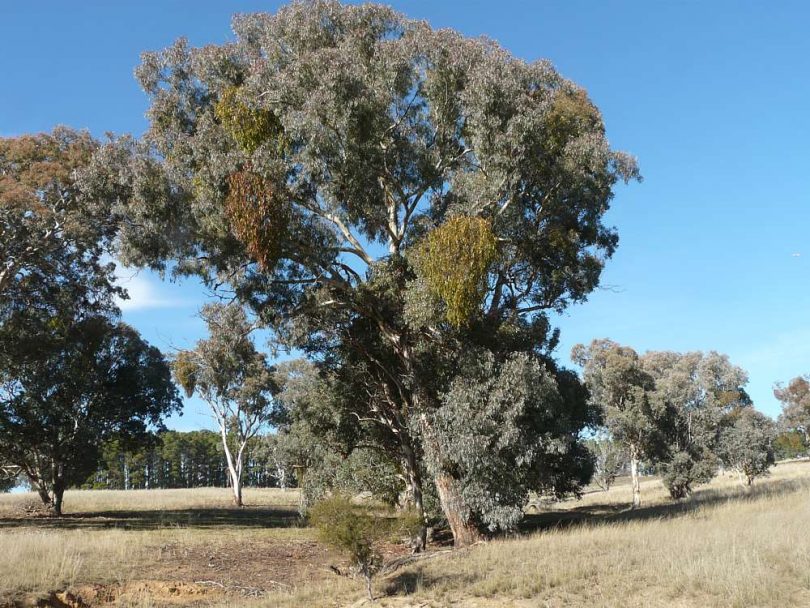
Box Mistletoe growing on a Red Box in Canberra; the yellowish clumps of the mistletoe leaves stand out. Photo: Ian Fraser.
Dr David Watson, an ecologist working at Charles Sturt University, has done a lot of work on the role of mistletoes and has concluded they are a ‘keystone resource’.
By this he means mistletoes contribute essential food and shelter to a wide range of other species, far more than we might expect from the relatively small number of species and individual plants.
The dense clumps provide necessary nesting shelter for many birds and the moist fleshy leaves are an important food for other animals, including several butterfly species. Both birds and insects avidly seek the abundant flowers.
Mistletoe fruit is also an important food source in many Australian habitats; many animals eat them and some – such as the Mistletoebird and the endangered Painted Honeyeater – rely on them.
The mistletoe attaches to its host by a thick base called a haustorium, which is easily seen from the ground, the seed having been deposited on the branch by a bird, most likely a Mistletoebird.
While the tree overall is unaffected by the extra demands of the mistletoe, the tree branch beyond the mistletoe sometimes dies.
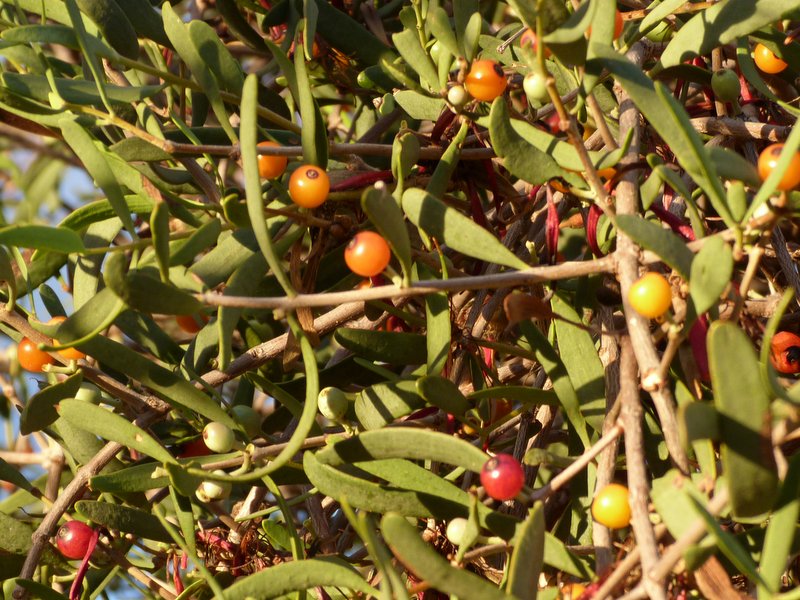
Berries of a dryland mistletoe species. Photo: Ian Fraser.
Furthermore many mistletoes don’t survive – for one thing the growing tree fatally shades many of them out – and when they or the dead tree branch falls this too is essential ground habitat.
For instance David Watson showed that ground-feeding threatened Brown Treecreepers disappear from woodland without mistletoes.
The Mistletoebird is a delightful red, white and glossy blue-black little bird that follows the mistletoe fruiting around the land and is almost exclusively responsible for spreading the mistletoe. Indeed, apart from insects and spiders, growing chicks only eat mistletoe berries.
The seed passes through very quickly with some sticky flesh still attached and to remove this annoyance from its feathers the bird wipes its backside on a convenient branch. The mistletoe seed germinates within this sticky dropping and roots itself in the branch.
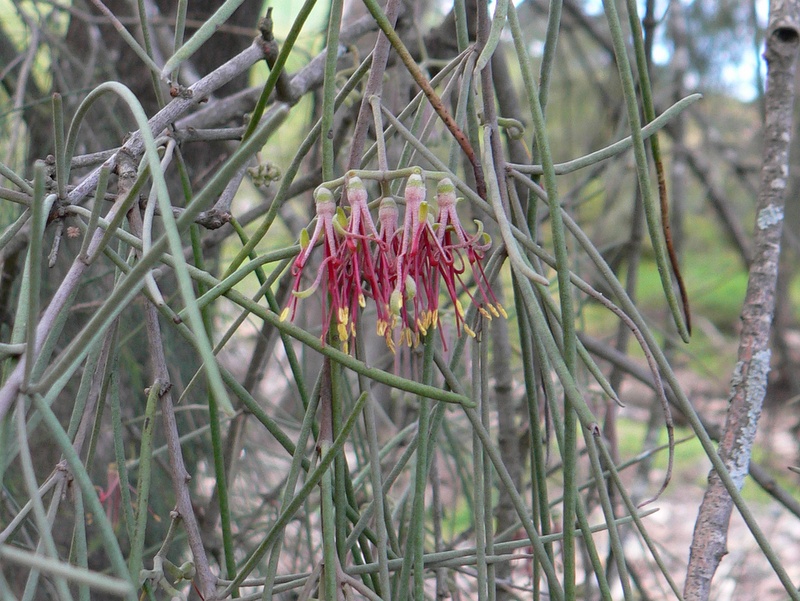
Sheoak Mistletoe growing on River Oak (a casuarina) by the Murrumbidgee. The leaves of this species are needle-shaped to match the host tree’s foliage. Photo: Ian Fraser.
One of the aspects of mistletoes that has always intrigued me is how the leaves of a species seem to mimic those of its host tree, be it the long narrow leaves of eucalypts, the round leaves of the Kurrajong or the needles of the Sheoak.
Some say it’s to hide the leaves from browsing possums, but I’m not convinced; I think a possum’s nose would be more useful to it at night than its eyes.
No, I think it’s down to the Mistletoebird again. It’s just found a very yummy snack among leaves that look like eucalypt leaves, so where to look for another one? Yep, among leaves that look the same – and most of these are actually going to be eucalypt leaves.
The plant effectively sends the bird to find another host tree for its seeds.
Far from being a problem, mistletoes greatly enhance a natural landscape – and they have great stories to tell. What’s not to love?
Ian Fraser is a Canberra naturalist, conservationist and author. He has written on all aspects of natural history, advised the ACT government on biodiversity and published multiple guides to the region’s flora and fauna.












